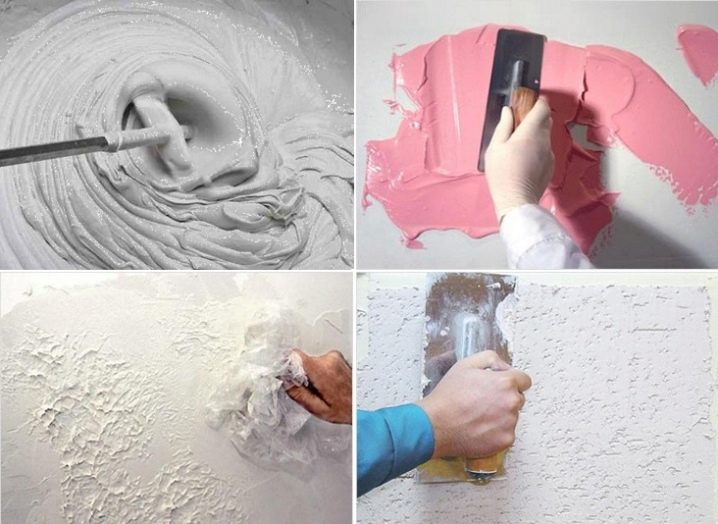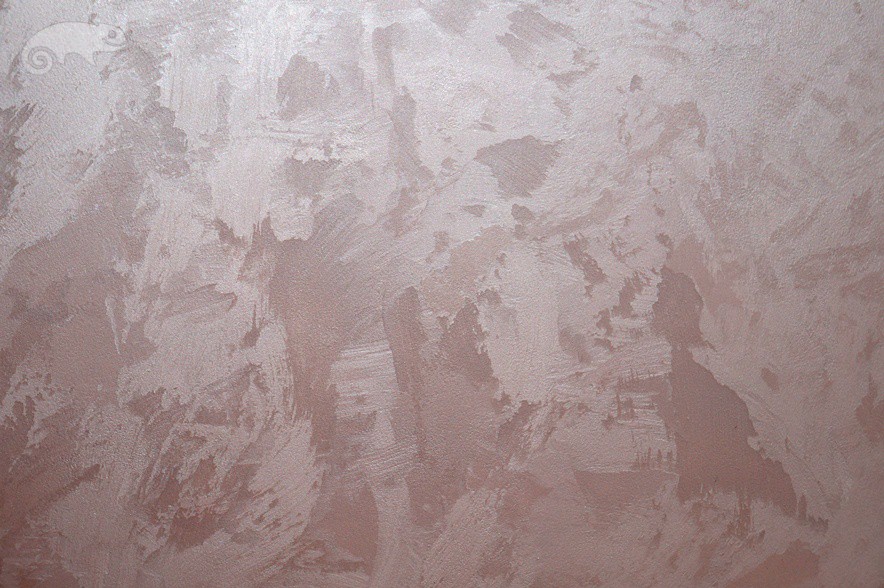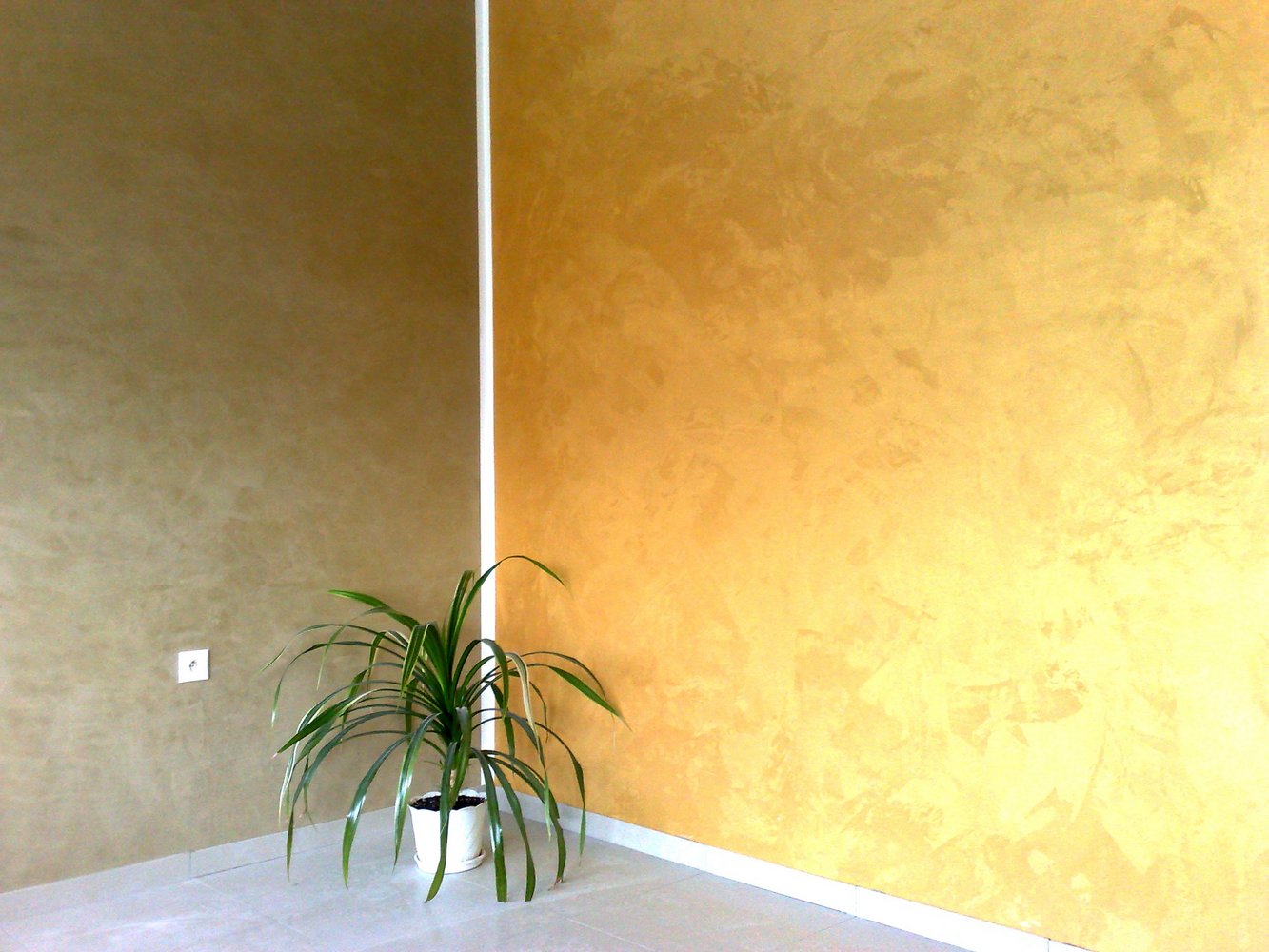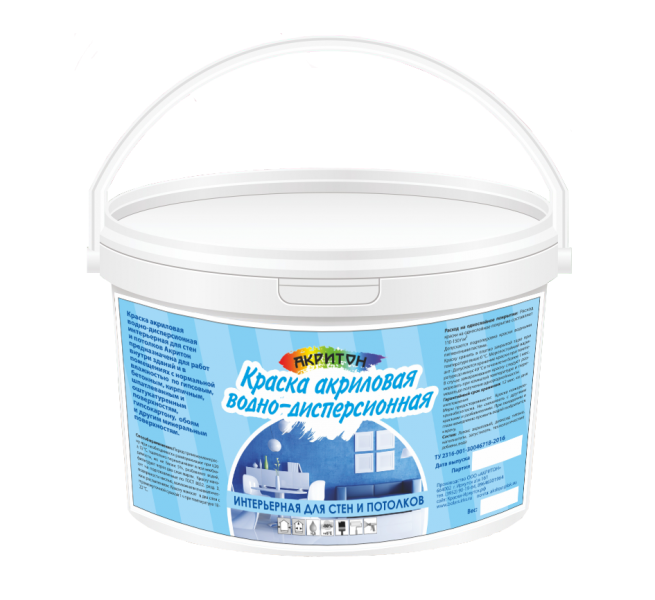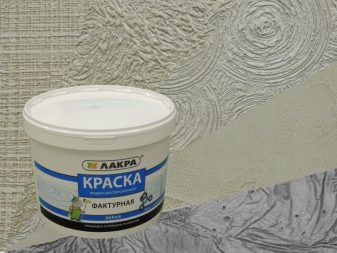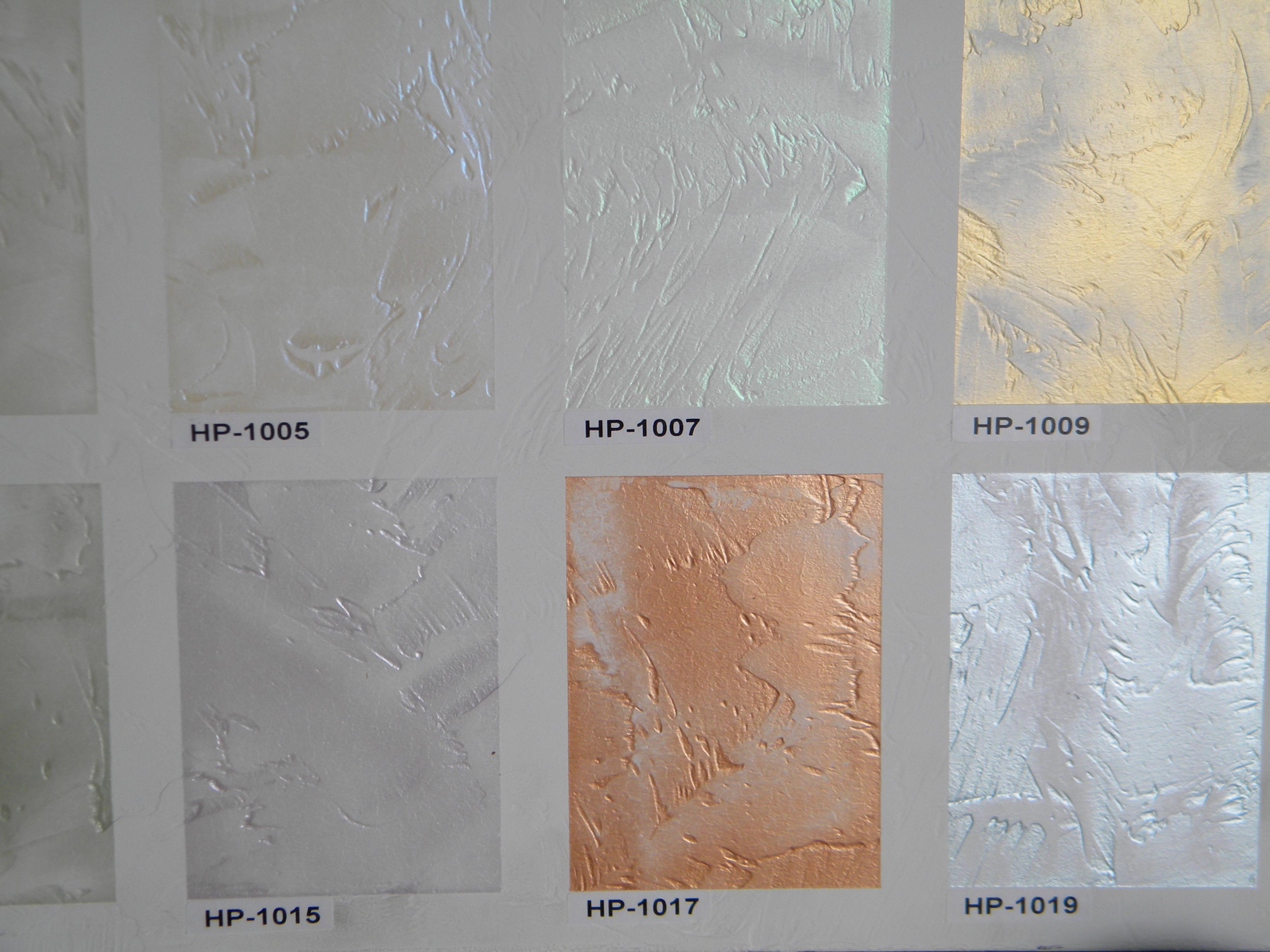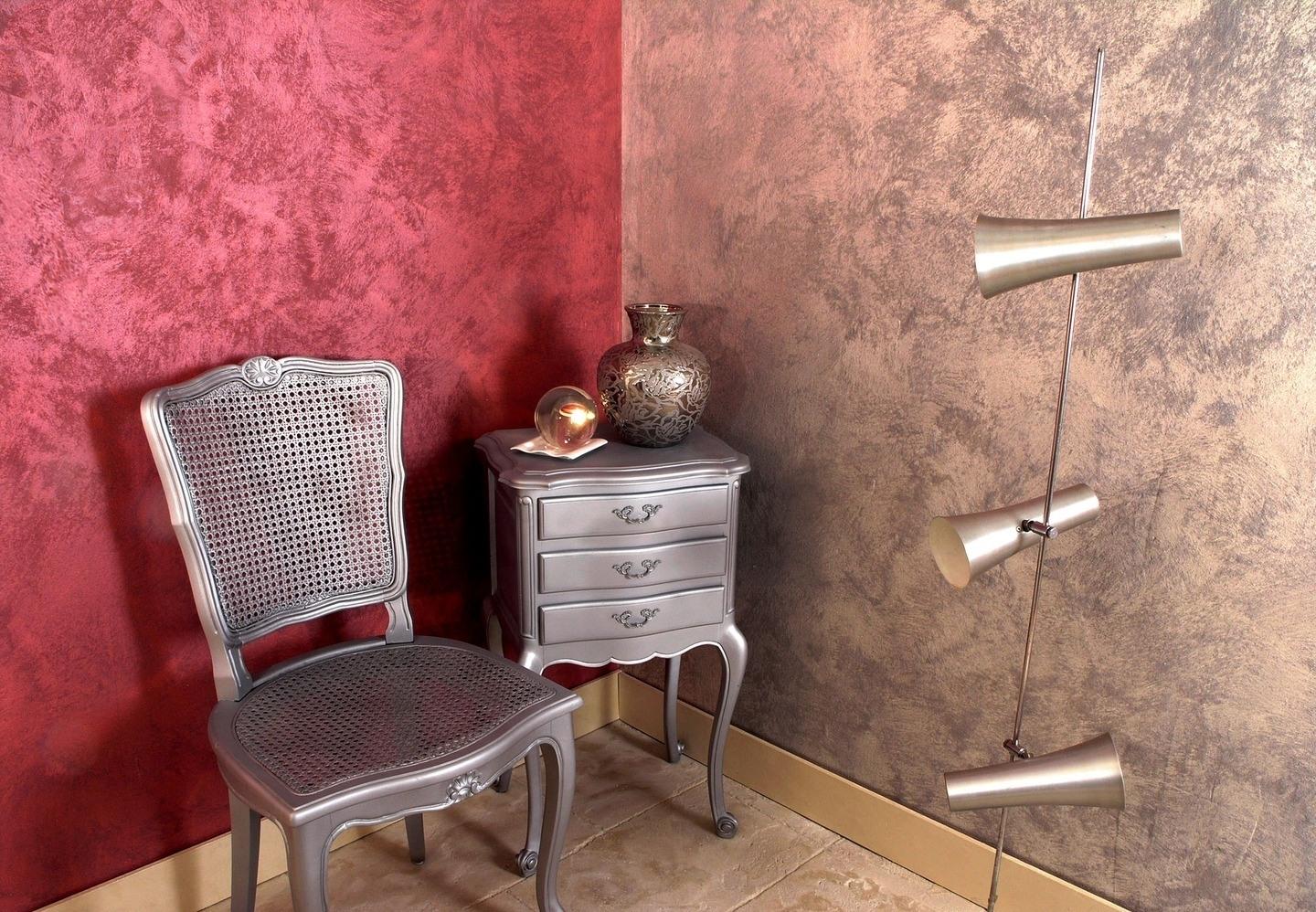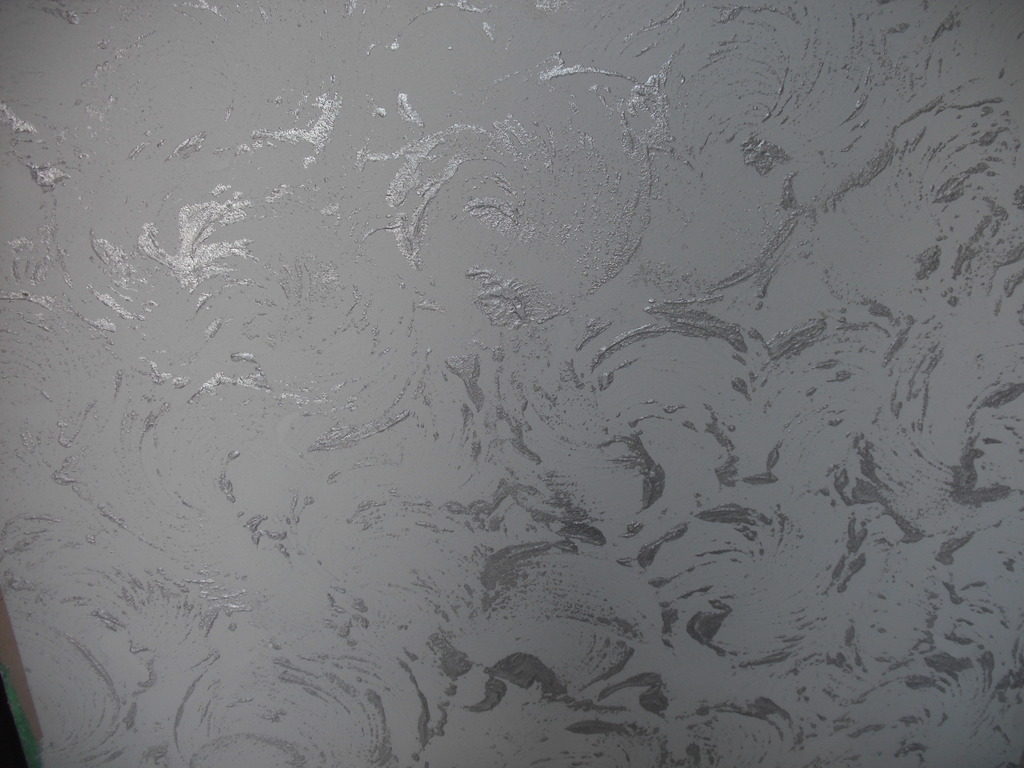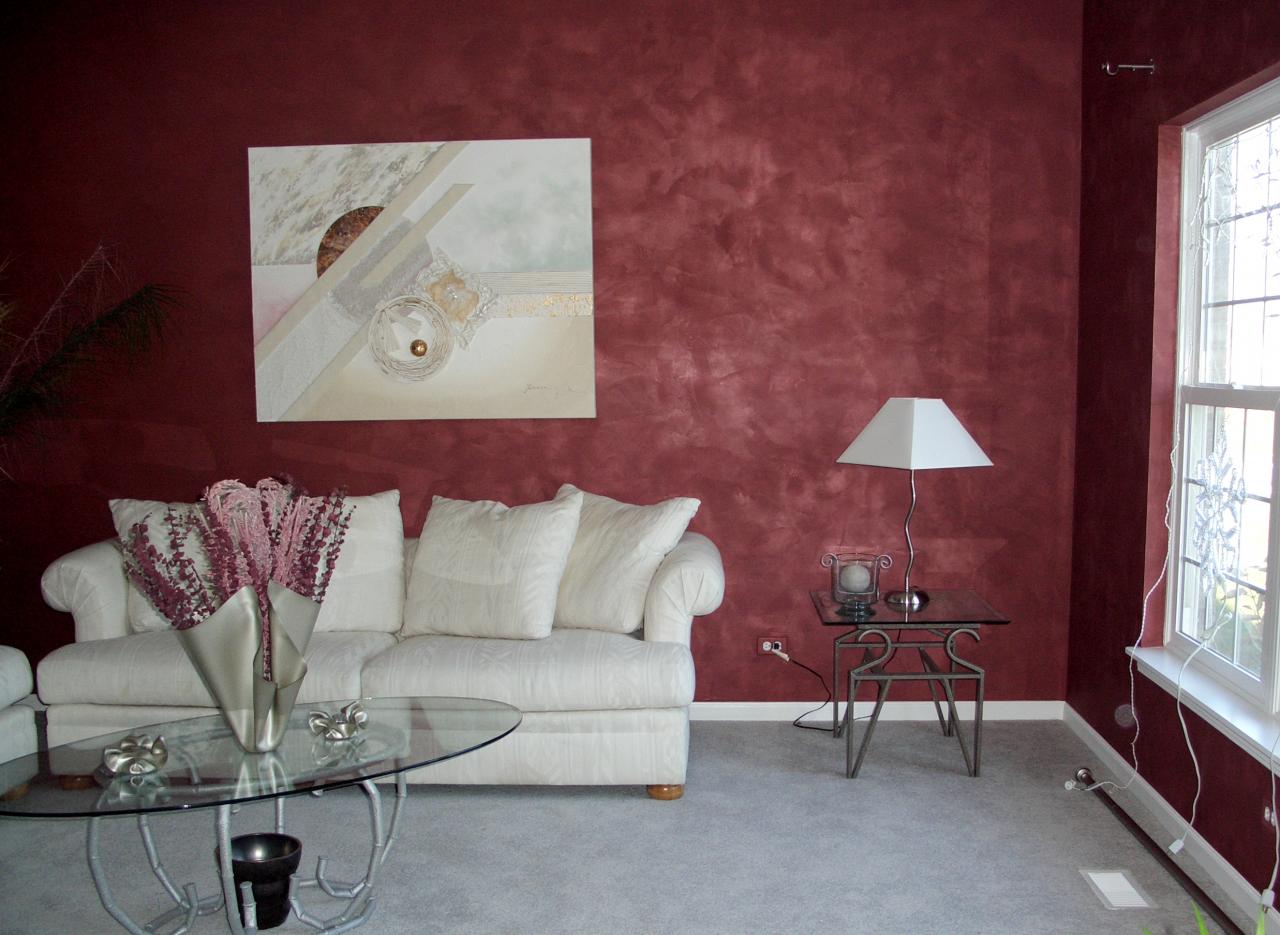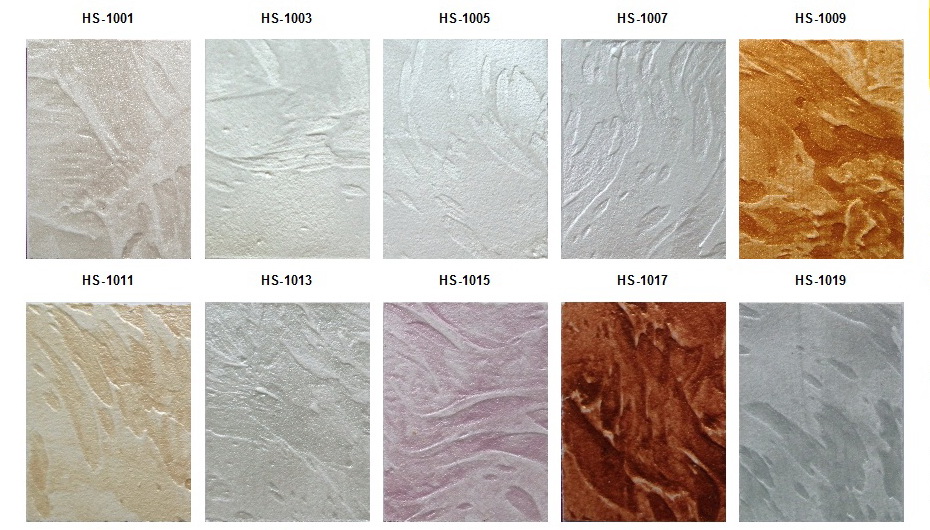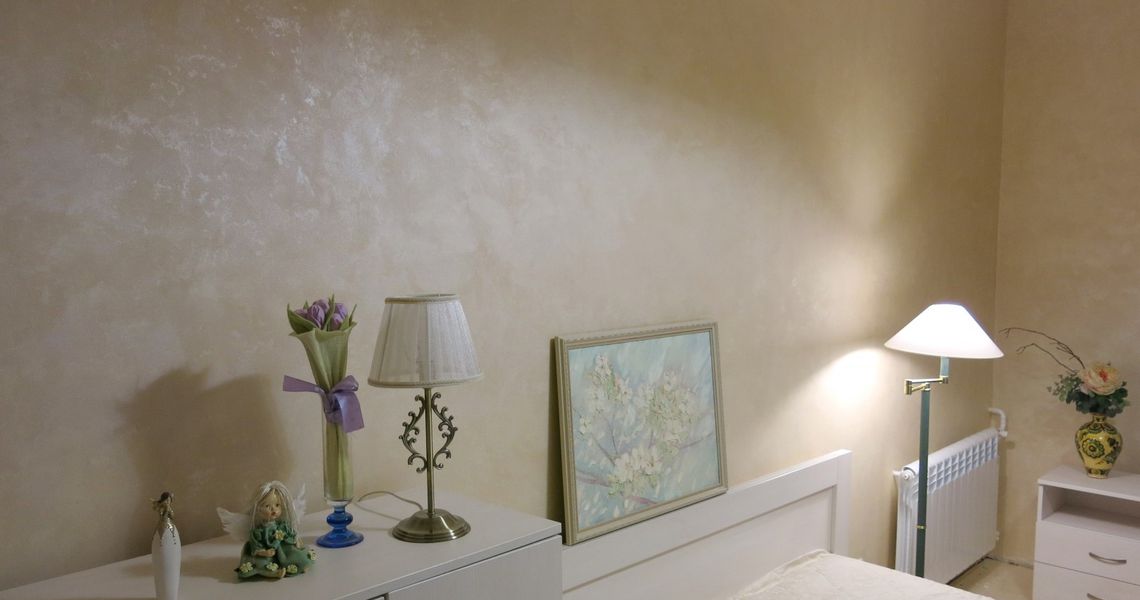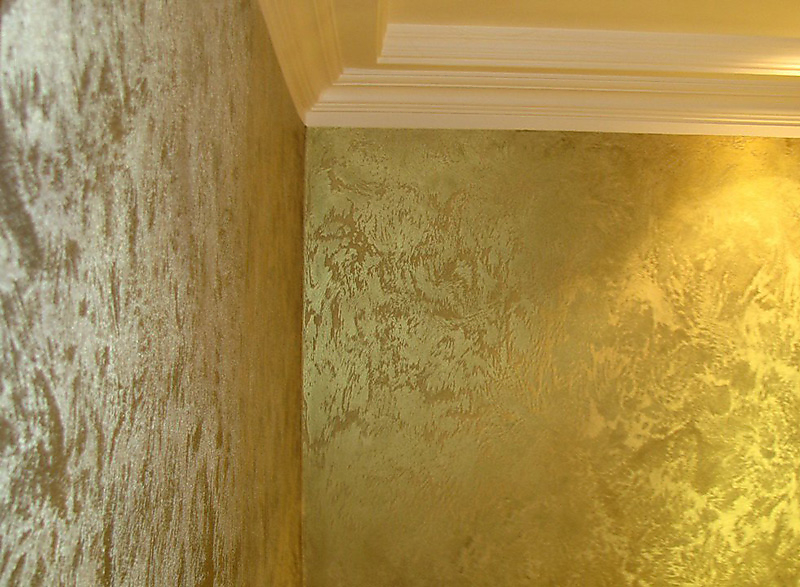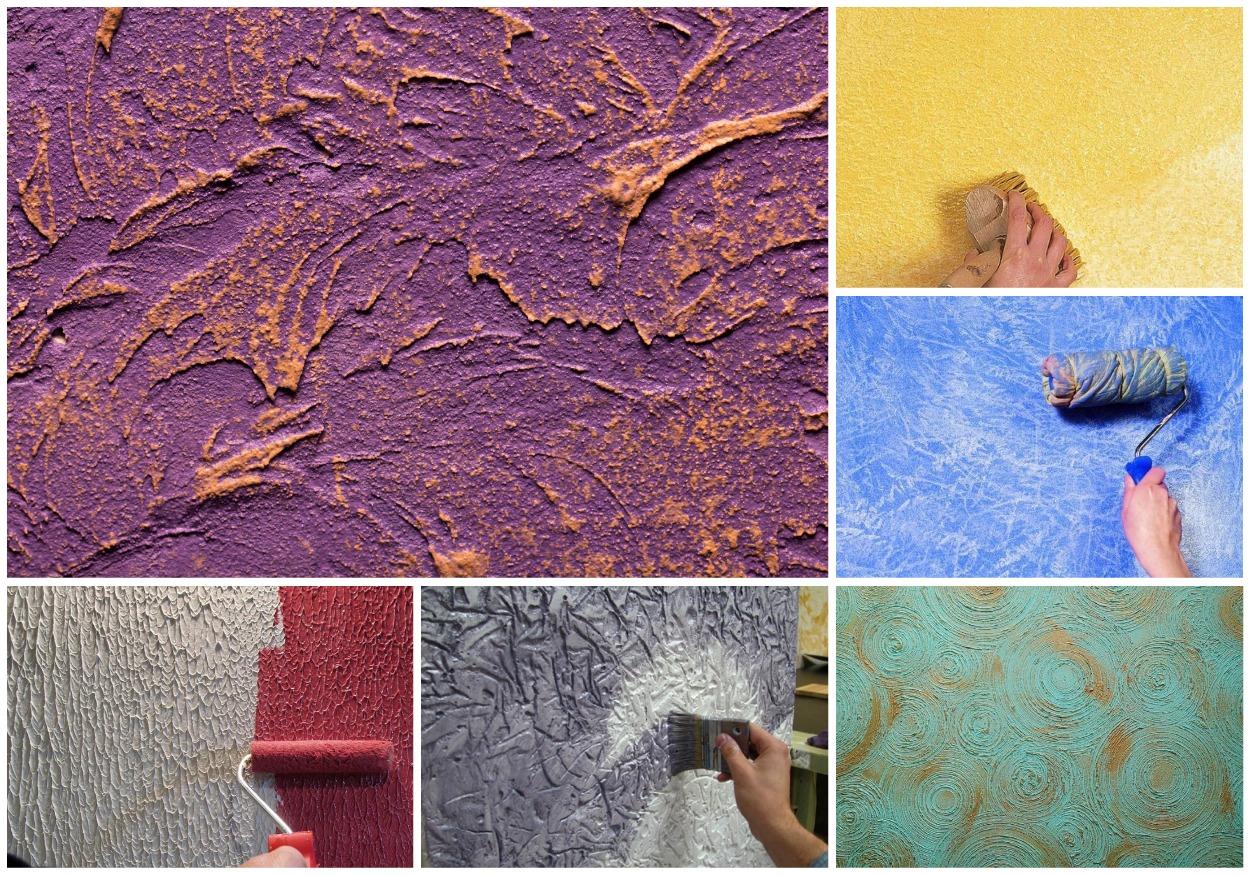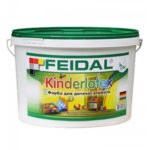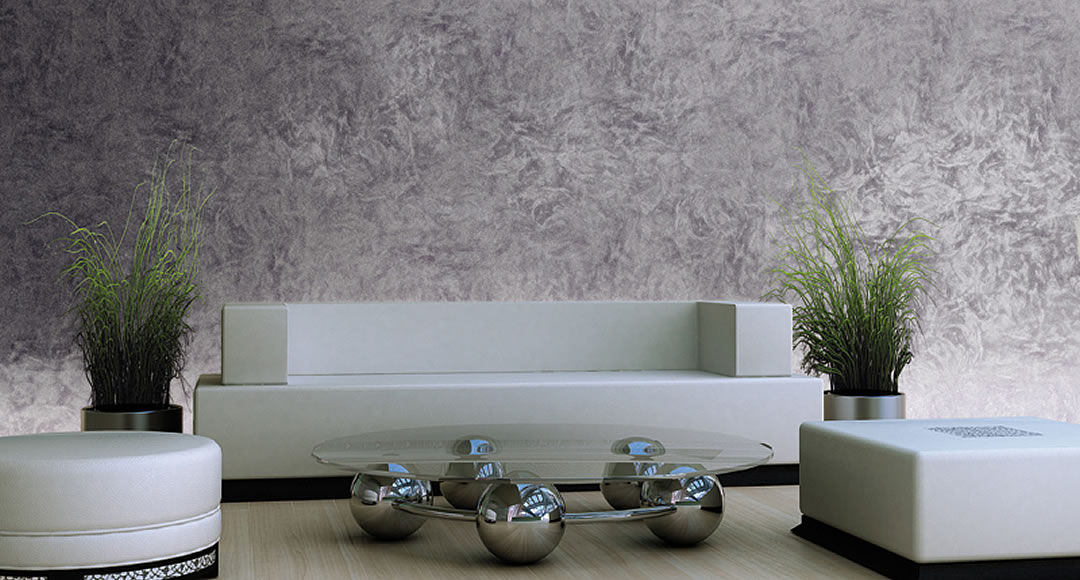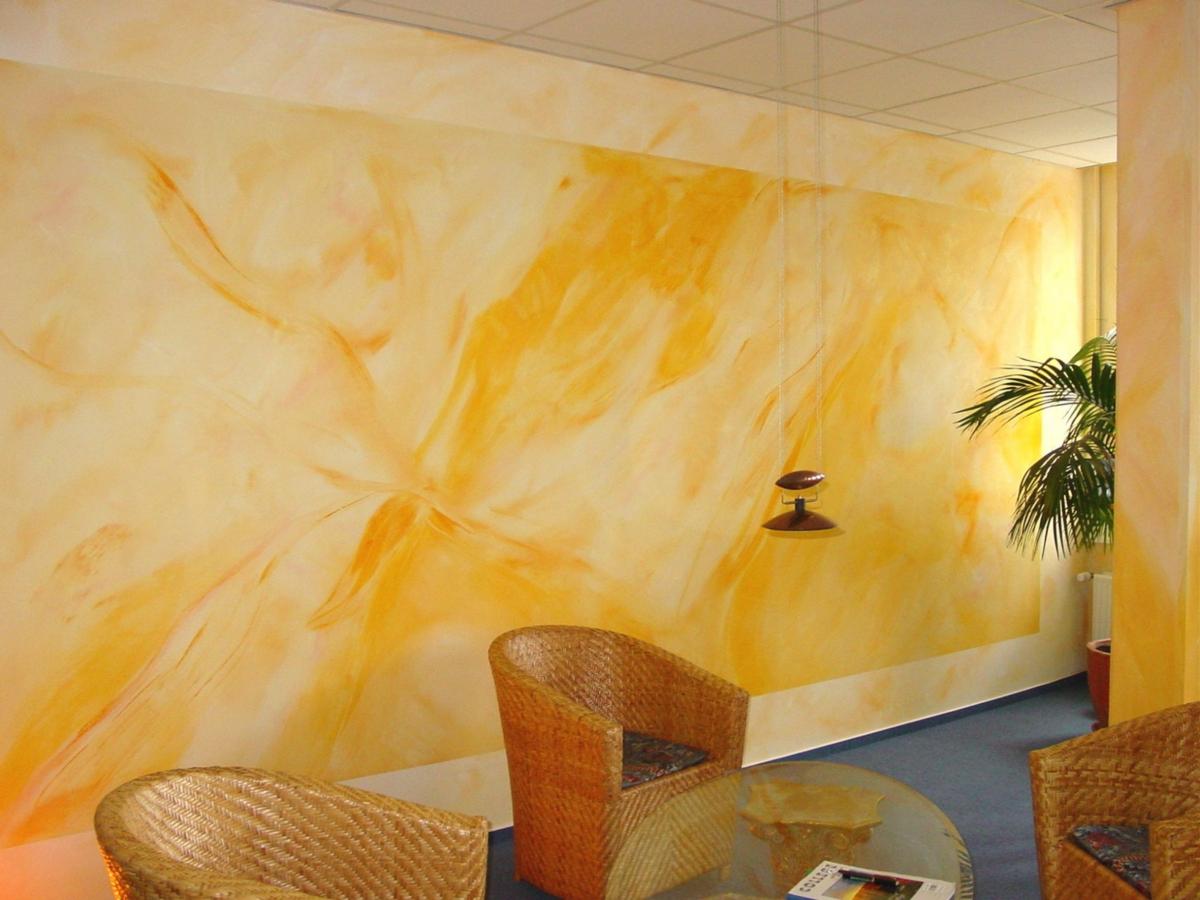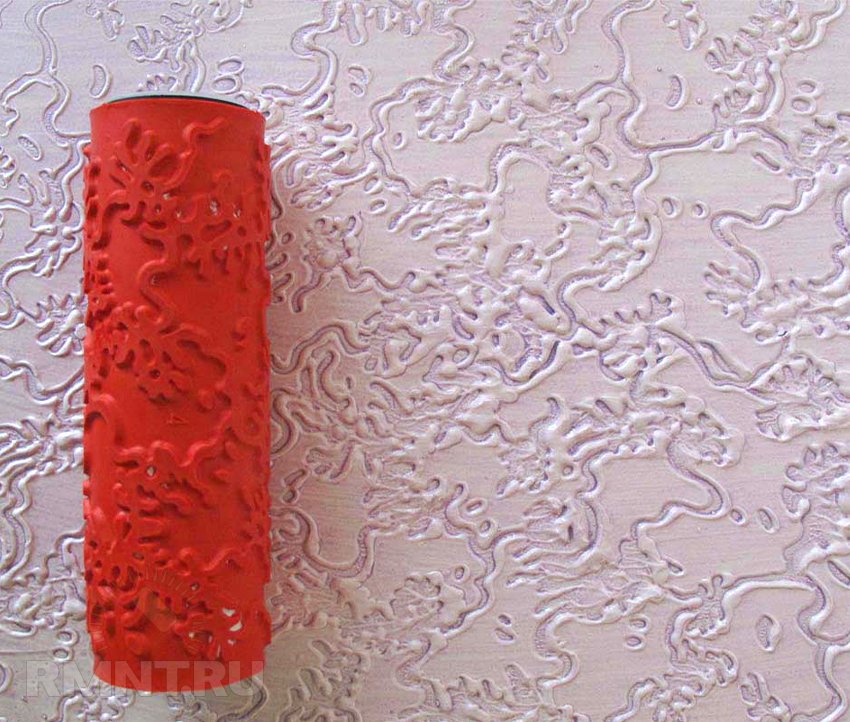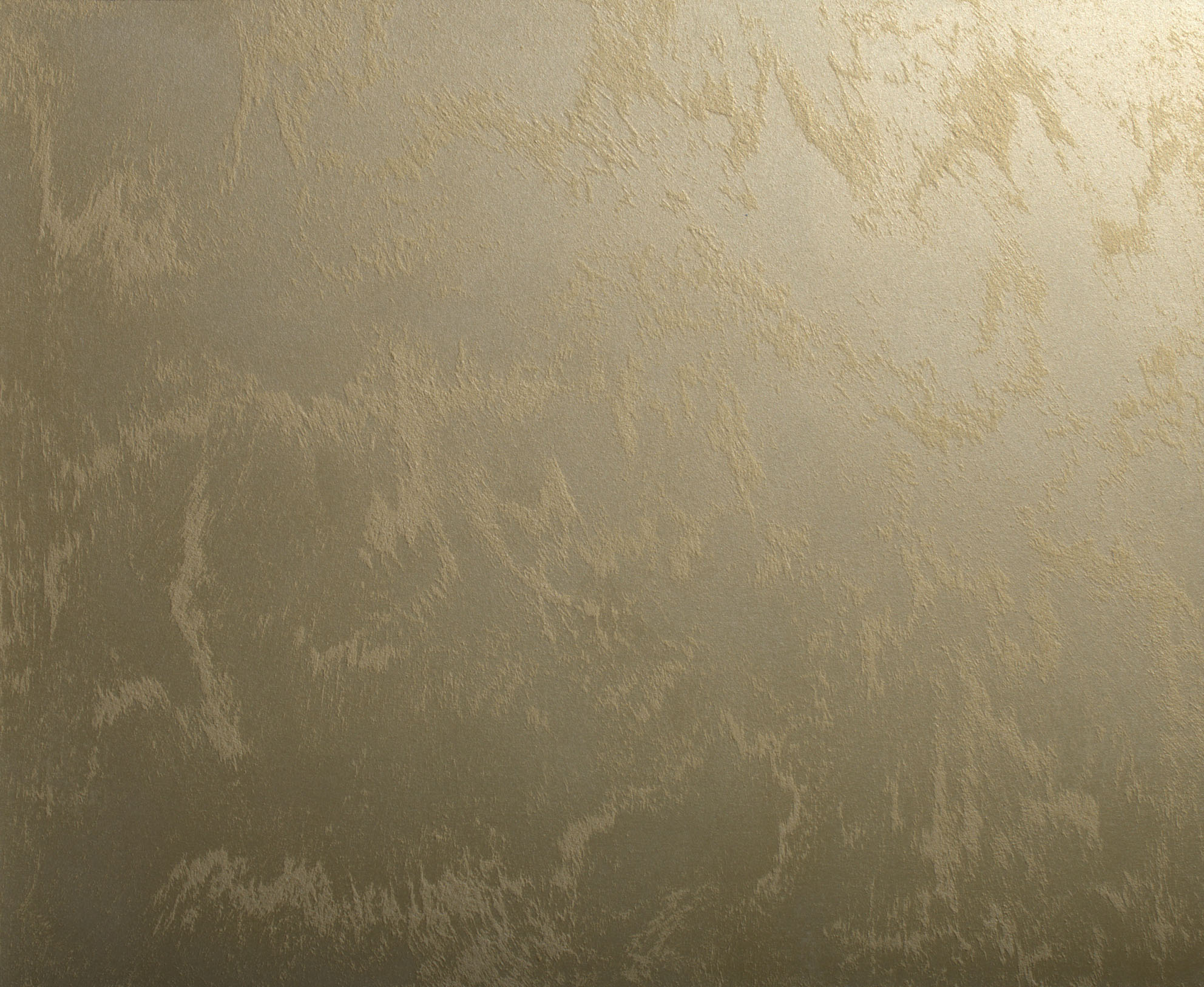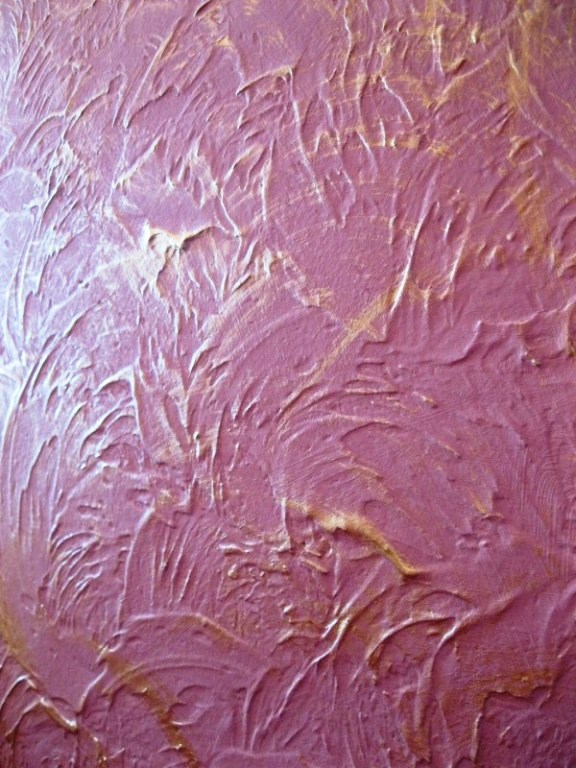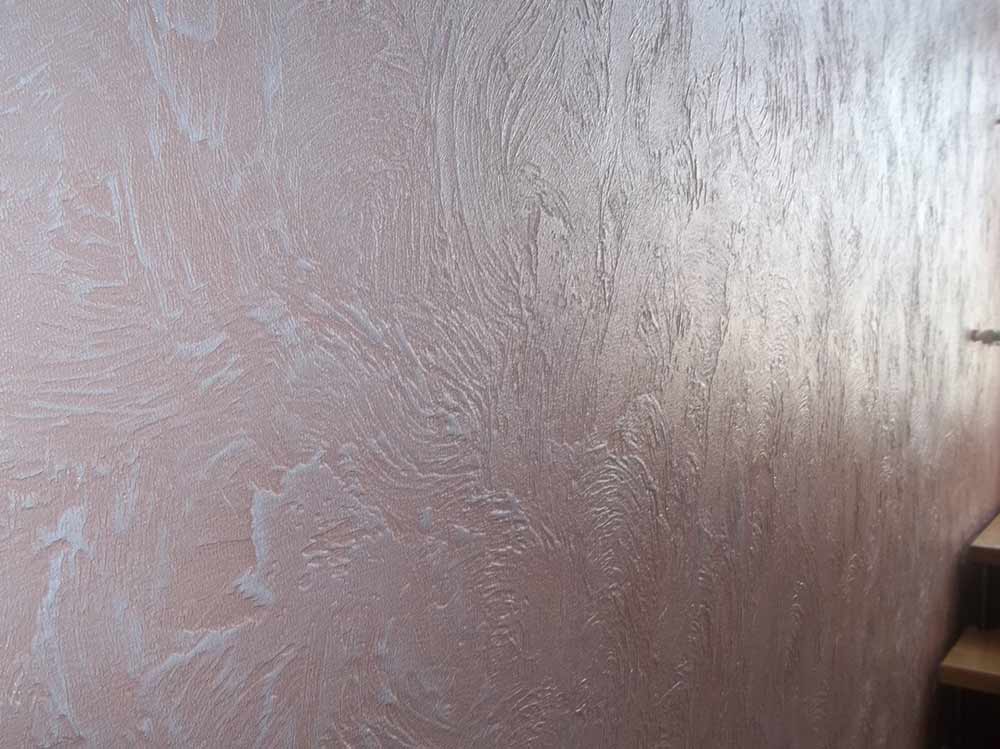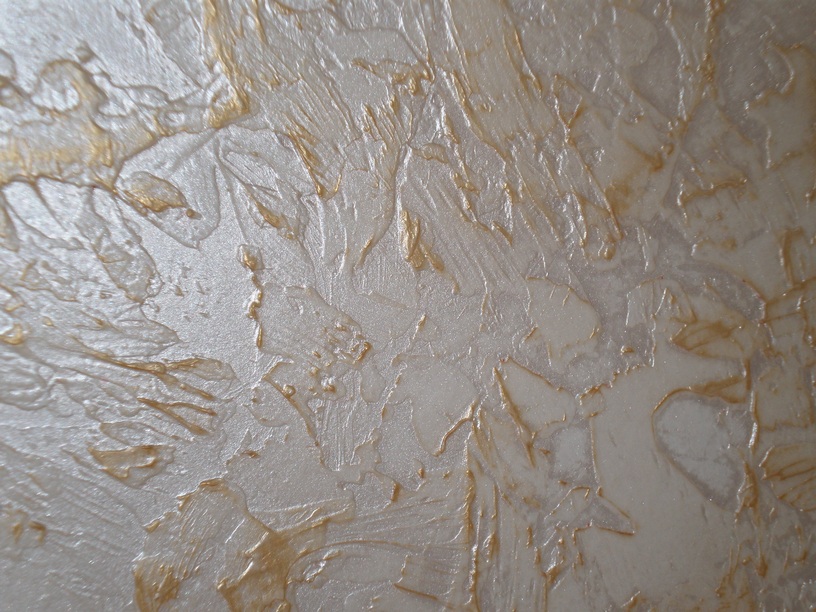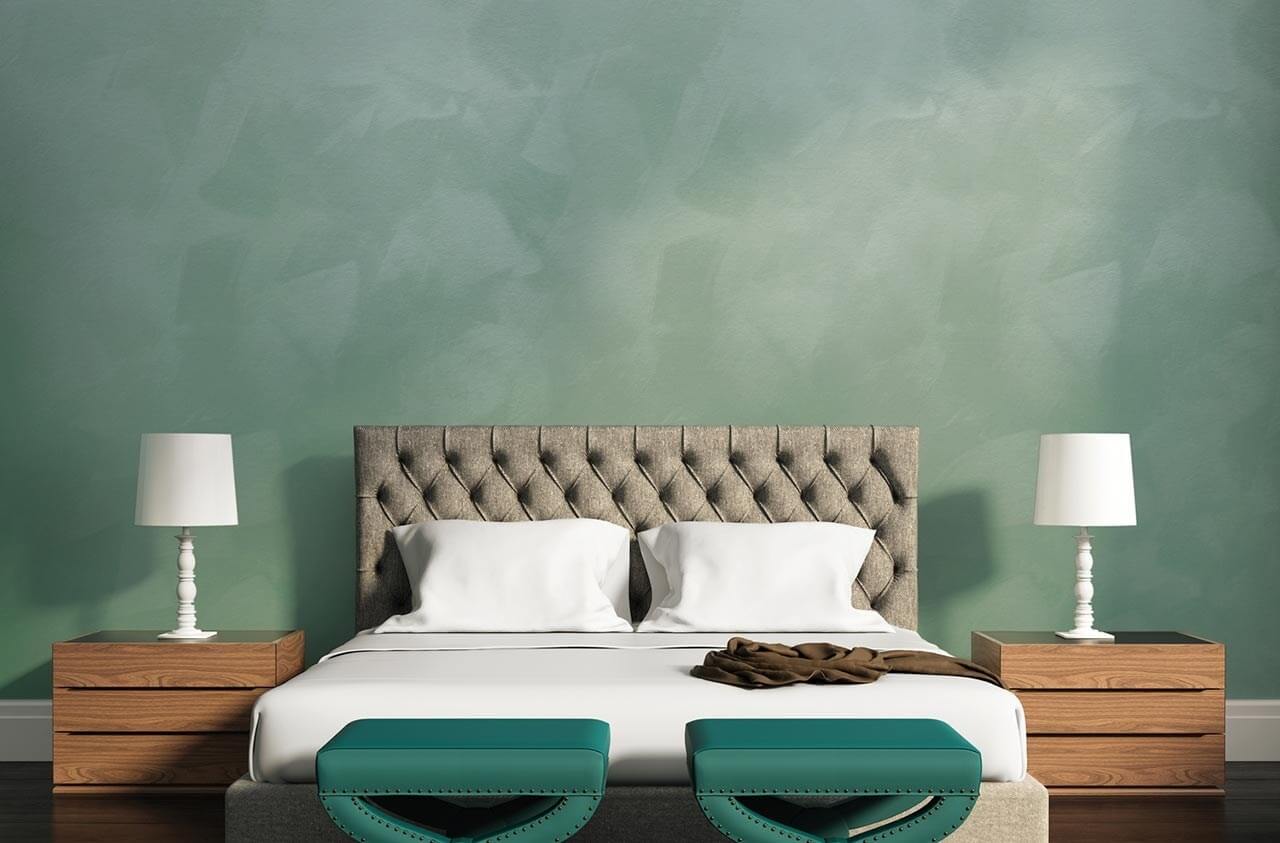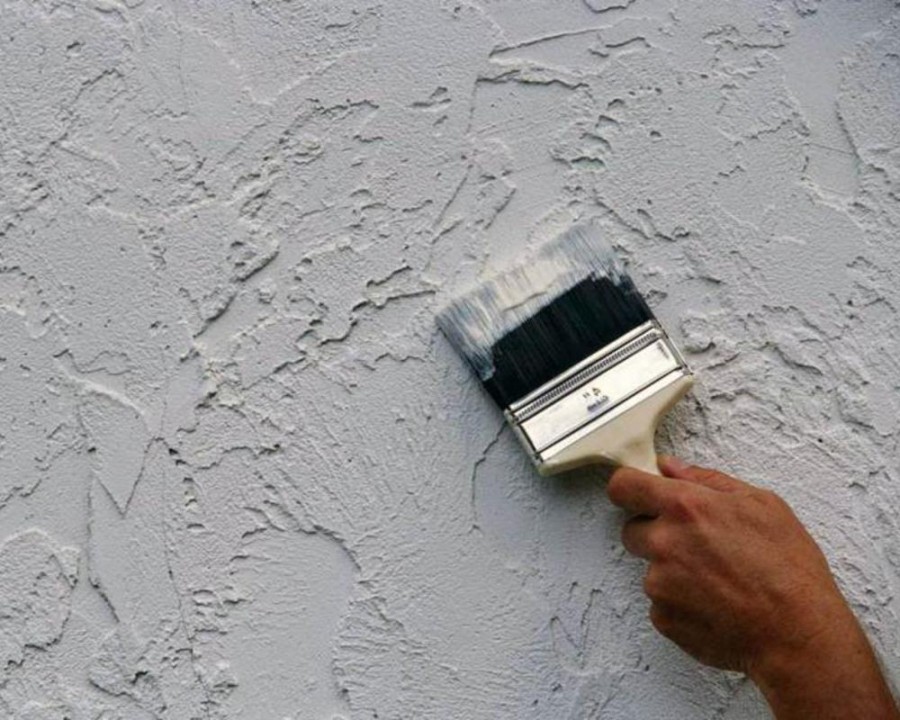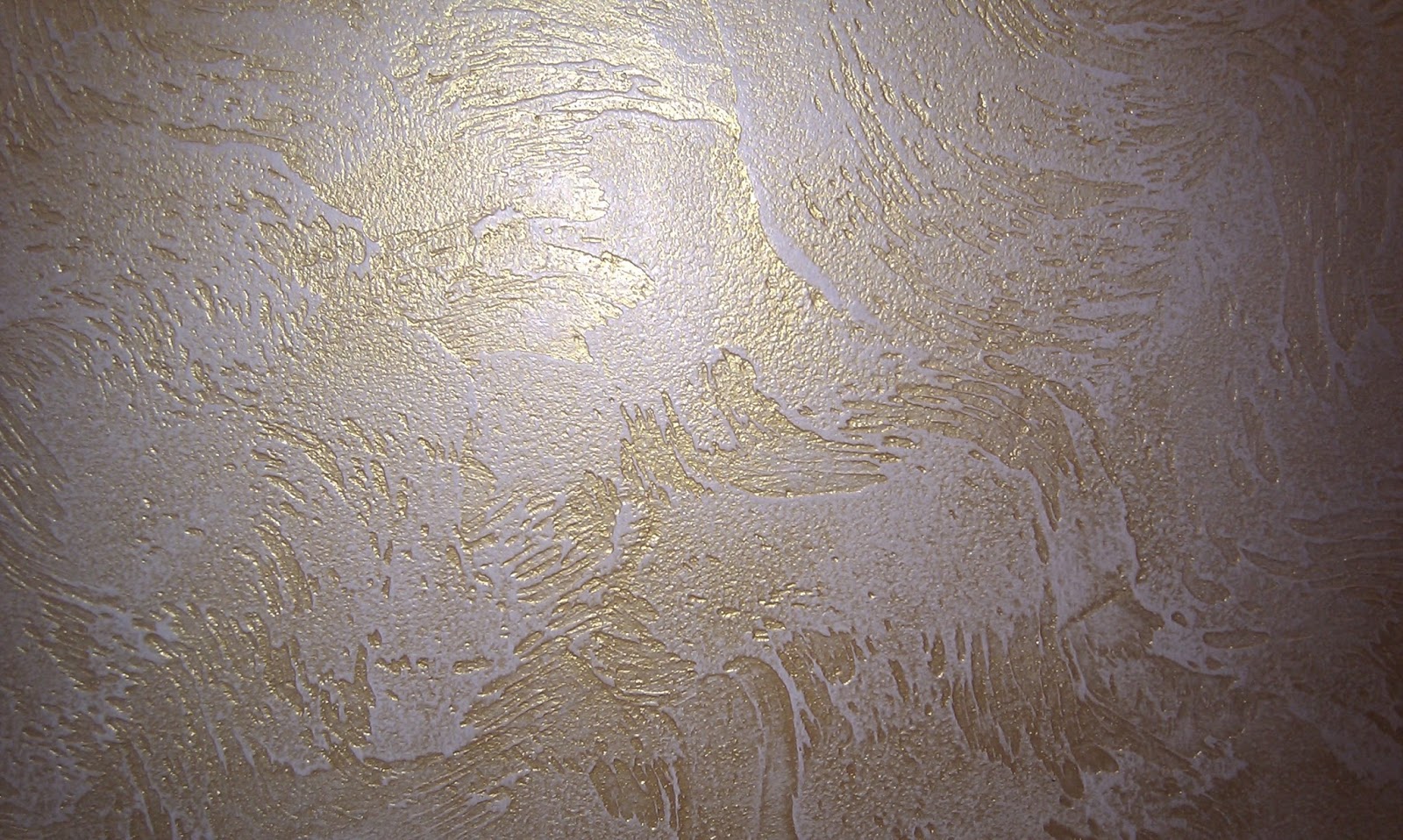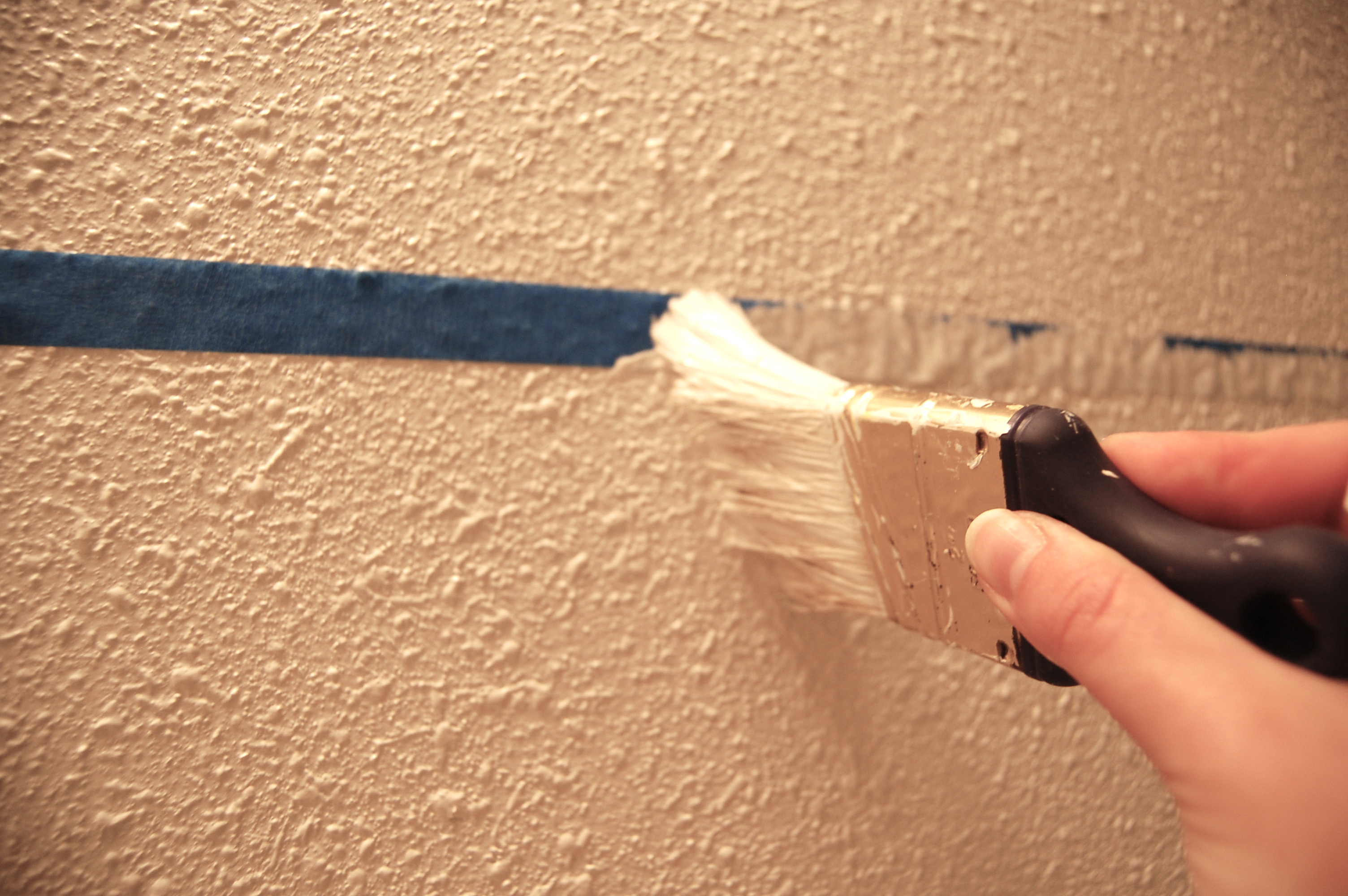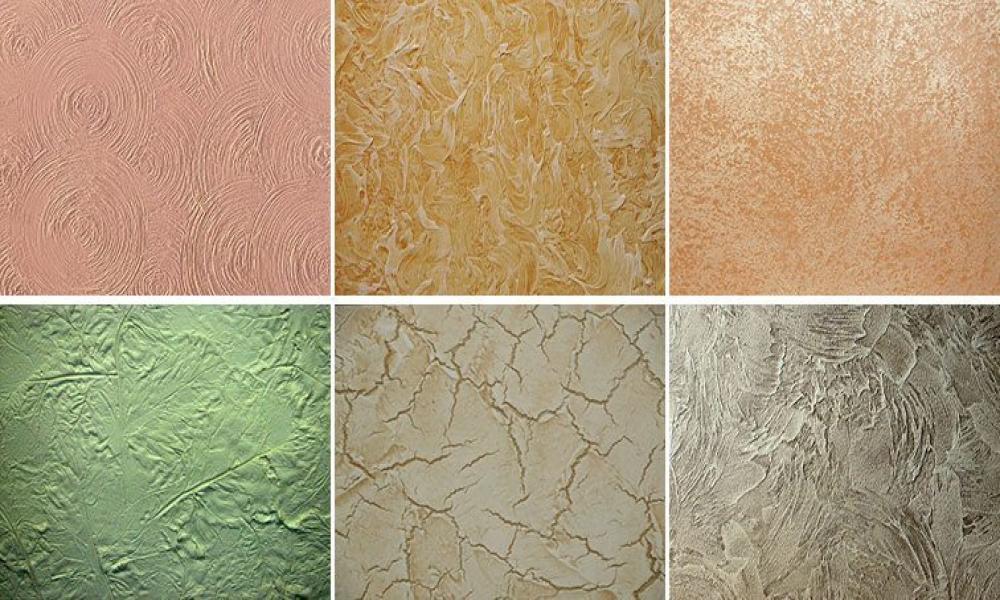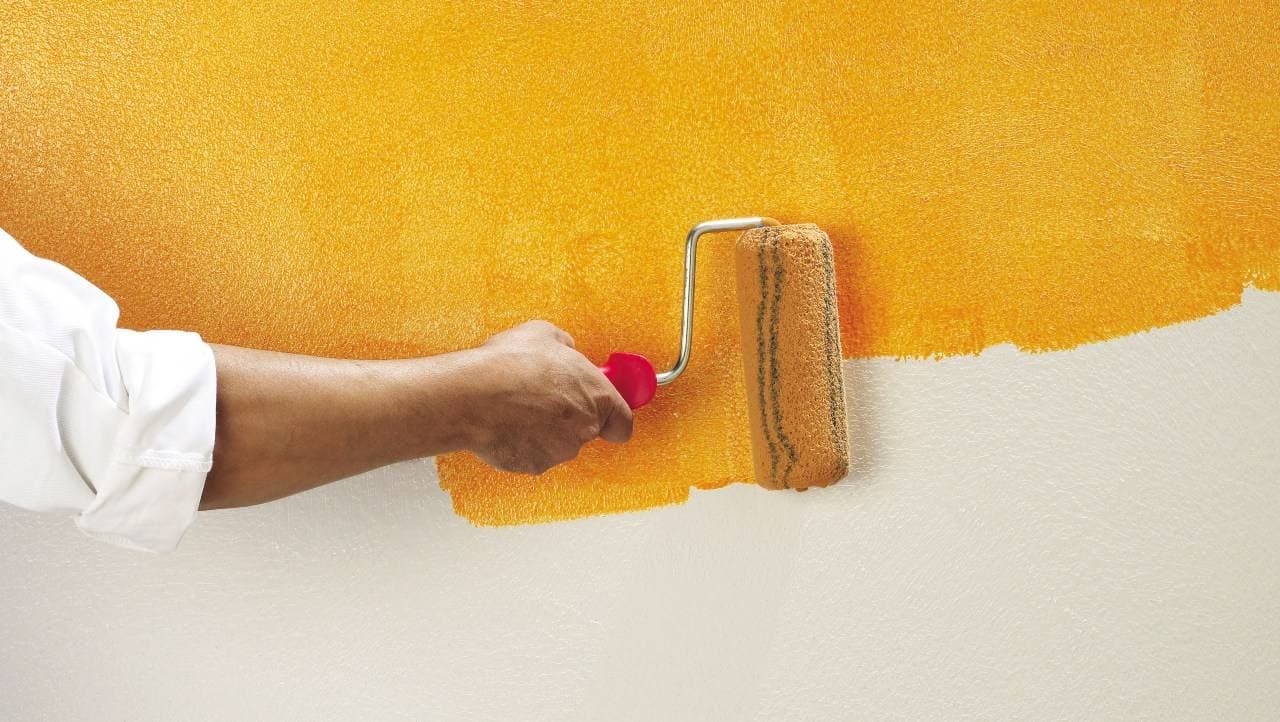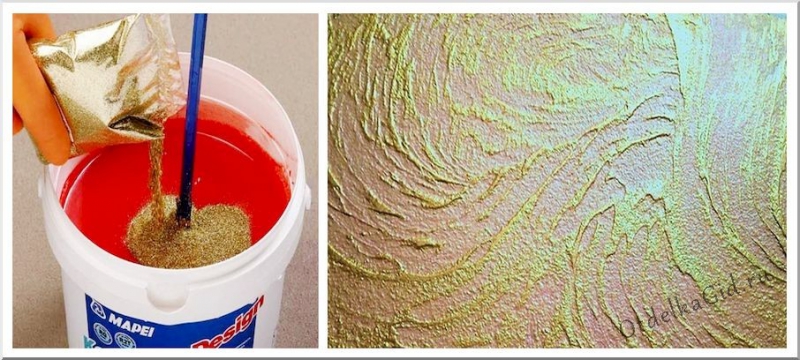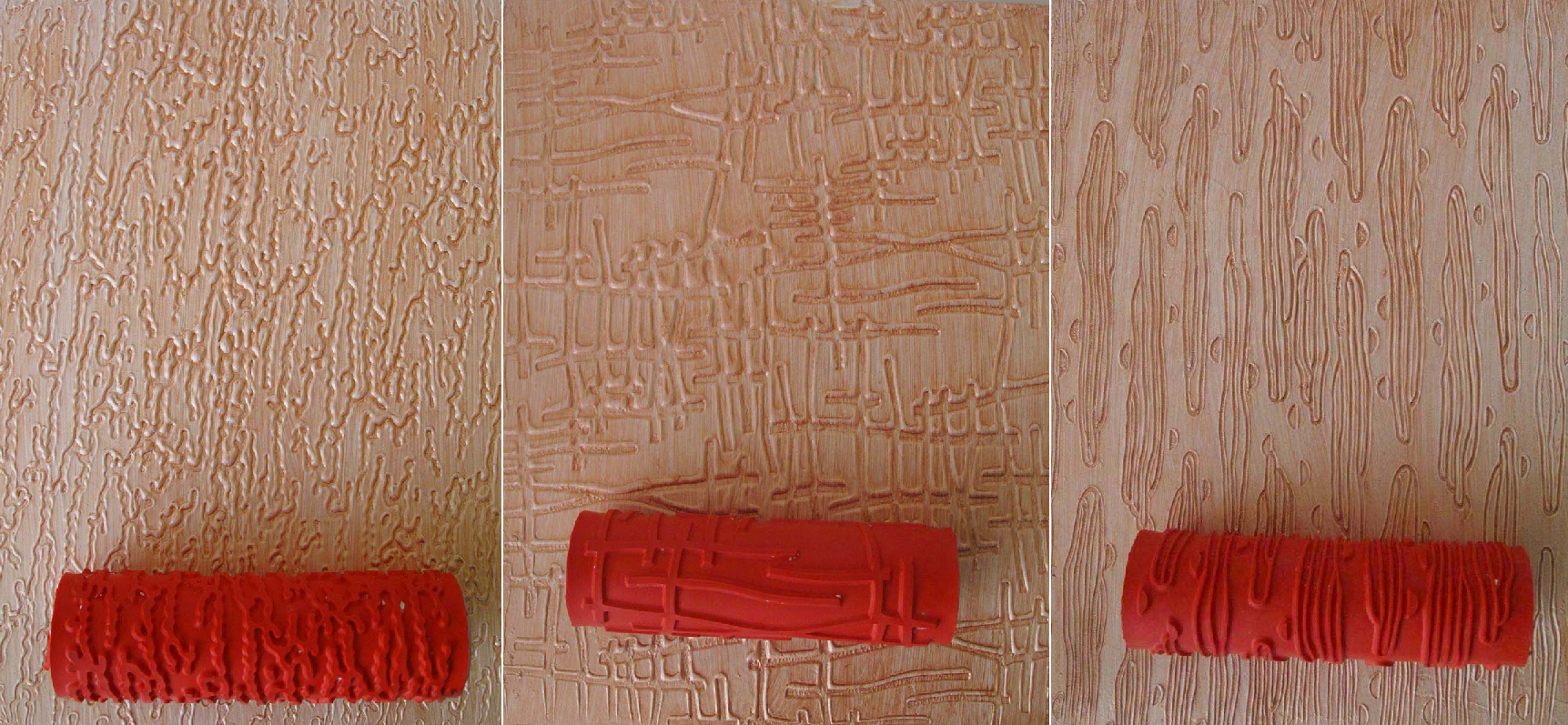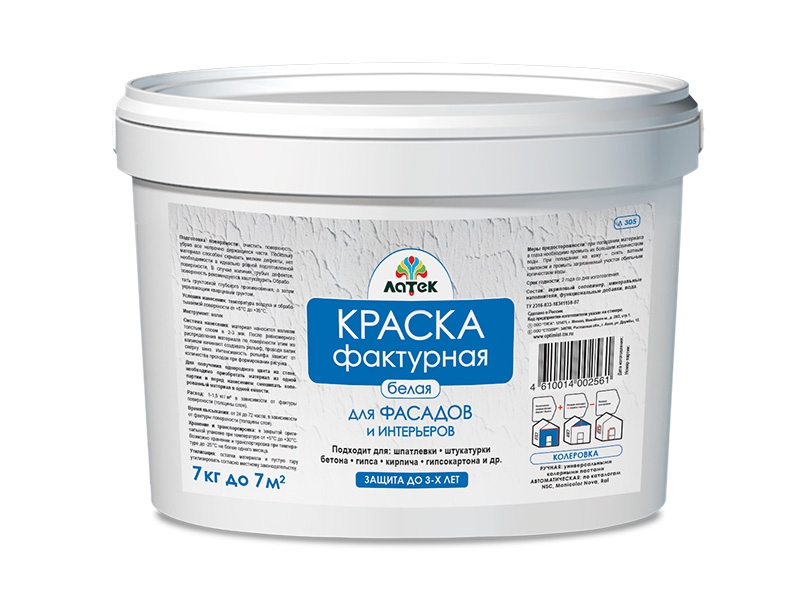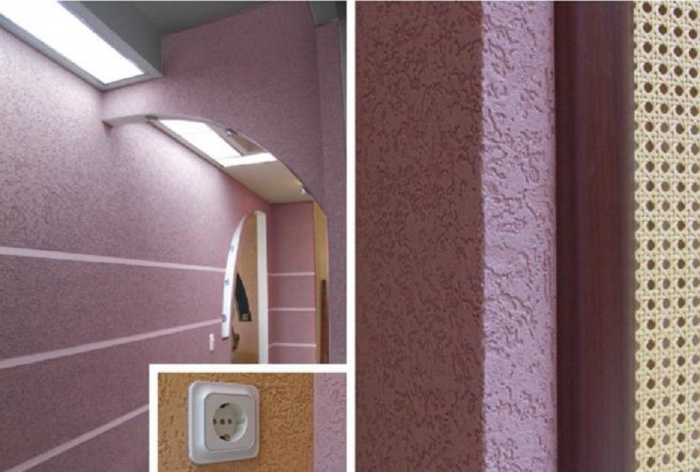How to choose
Water-based acrylic paint made from acrylic resins is very popular in the market. This popularity was achieved due to its excellent strength and elasticity.
Although there are more affordable types of acrylic paints:
- styrene acrylic;
- acrylosilicone;
- vinyl acrylic.
Acrylic copolymers are used for the production of these formulations.
Acrylic paint is divided into a large number of types, each of which differs in its composition and consistency. There are compounds designed to work in bathrooms and other places with high levels of humidity, as well as for painting ordinary rooms. It is necessary to follow the manufacturer's recommendations, using each type of paint strictly for its intended purpose. If the paint was produced for dry rooms, then it should be used only there.

Some acrylic colors
Most acrylic paint solutions used for painting ceilings are available in only one color - white, but you can easily change this by applying colors of different shades. Some manufacturers produce acrylic paints in different colors that do not need tinting.
Prices for water-based acrylic paint
water-based acrylic paint
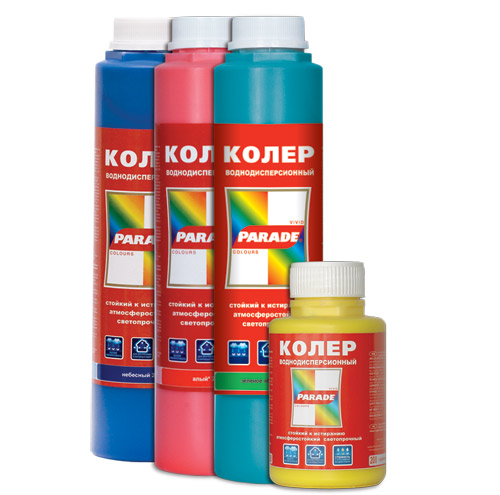
Color for acrylic paints Parade
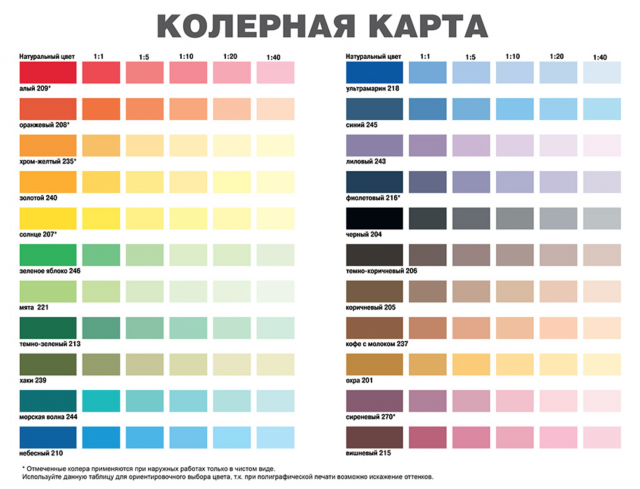
Color card
Based on the level of whiteness, acrylics can be roughly divided into three groups:
- milky white;
- super white;
- white.
When painting the ceiling, it is advisable to use the brightest shade of white. When choosing, you need to be careful: some manufacturers do not quite correctly indicate the color on the can. For example, a can of milky white paint might have “white” written on it.
To keep things out of the way, ask the salesperson to slightly open the paint can for a visual comparison. You need to compare it with an ordinary sheet of paper (white, of course). Just take a sheet of A4 paper with you: if the colors match, then you can safely buy paint. Not all sellers are ready to meet their customers halfway. In this case, explain that you need the most white color, promise to return the product if it is not as described.
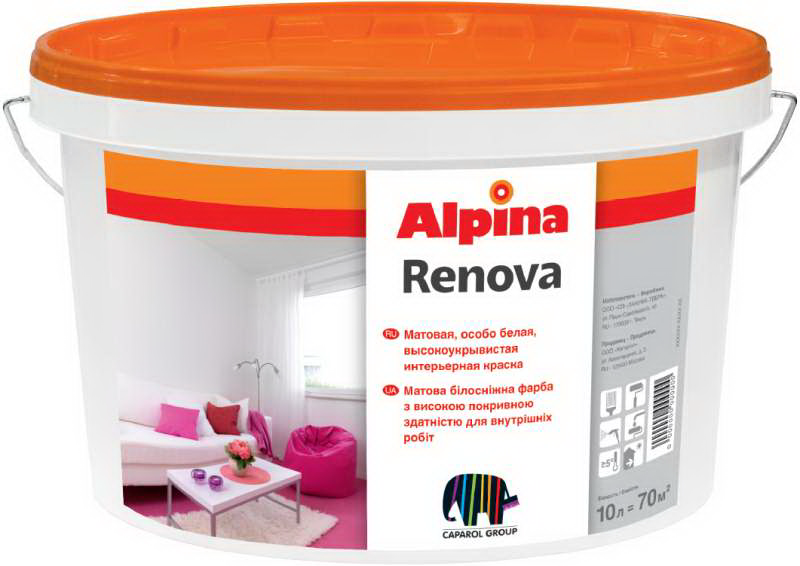
Super white paint for walls and ceilings Alpina Renova
After painting with acrylic, the suspended ceiling acquires a matte or glossy structure, which must be taken into account when choosing. The matt color that forms after drying plays a very important role, since minor defects will not be very noticeable (cracks, irregularities or poor quality application of layers), which is not the case with gloss. When painting the ceiling or walls, the dullness indicator is on a par with whiteness, acting as one of the main criteria for the impeccable appearance of the treated surface.

Mat and gloss
If your goal is to create not white, but a colored ceiling, then it is advisable to use gloss here. It makes sense to buy this composition if the ceiling surface is large and smooth enough. If you are renovating non-residential premises, then you can also use gloss here.
Table. Recommended acrylic paints.
| Name | Brief description, features |
|---|---|

Rezolux Profi-52 by MIZAR |
Frost-resistant, moisture- and wear-resistant odorless enamel. Environmentally friendly. Forms a durable "breathable" coating that removes moisture from the surface and does not let it in, and thus prevents surface destruction. Due to its versatility and affordable price, this enamel is the most successful choice for finishing work on various surfaces. |
|
Sniezka Super Matt |
Deep opaque acrylic paint from a Polish manufacturer. Used for painting large surfaces, masking minor irregularities. Ease of application and breathability should be highlighted among the main advantages. |
|
Nature supermat |
Matt paint used to paint ceilings and walls. Resistant to wet cleaning and abrasion, has a high hiding power. |
|
Sadolin INNETAK |
Eco-friendly acrylic paint with a dazzling white color is used to paint the ceilings in all rooms. The innovative structure allows you to hide all imperfections and uneven surfaces. |
|
Svyatozar-17 "Almaz" |
Wear-resistant matt paint without unpleasant odor. It is an environmentally friendly product that is resistant to high humidity. |
Using embossed paints
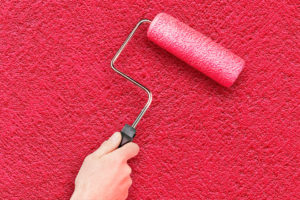
Unlike decorative plaster, relief paints are thinner and thinner, making them easier to work with.
However, they are more demanding on the surface than plaster and can only be decorated with well-aligned walls. They are applied with a trowel, spatula or roller, after leveling, they create a pattern using various tools. This will be shown in more detail below in the video tutorials.
Textured paints, as a rule, have good adhesion, therefore they are used for different substrates:
- on wood;
- for metal;
- for plaster and concrete;
- for foam blocks and gas blocks;
- for drywall;
- for OSB and DSP;
- for plastic.
Facade painting
Special requirements are imposed on paint and varnish coatings for facades. They must have increased strength, be resistant to abrasion, mechanical stress, precipitation and temperature extremes.
All these advantages are possessed by silicone aqueous dispersions. Their cost is fully justified by the result - facades, basements of houses, fences and balconies, after painting, receive a bright original texture.
The introduction of latex liquid polymers gives acrylic paints additional strength and water resistance, which will make it possible to use them for facade decoration.
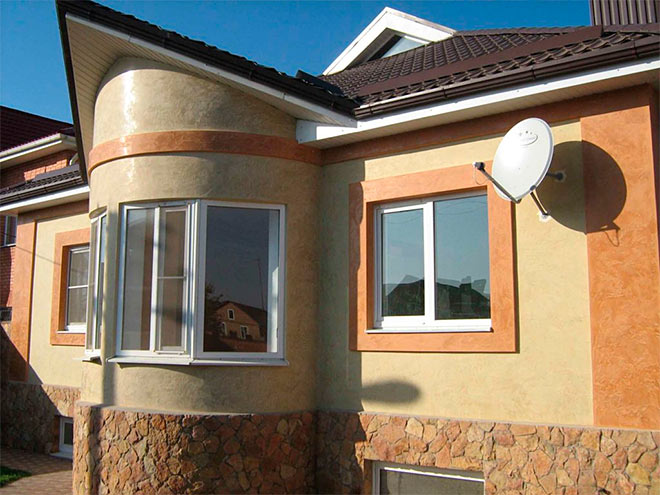
Stone-painted in two colors, the basement of the house is finished with decorative plaster imitating masonry
For outdoor work, it is allowed to use less expensive, but sufficiently strong styrene-acrylic copolymers.
The surface quality largely depends on the manufacturer's brand. Textured paints VGT, Latek, Condor, Feidal Fassadenfarbe Relief, Dufa have proven themselves well.
The final coating of the finish with acrylic varnish will protect the facade from scratches, dust, moisture, and make the paint crack-resistant.
In the interior
With the help of decorative relief mixtures, ceilings and walls of living rooms, kitchens, nurseries, corridors, loggias, office and industrial premises are finished.
Moreover, you can paint only part of the interior: columns, beams, pilasters, create original drawings and compositions on their basis.
In bathrooms and kitchens, it is better to use washable coatings to obtain textured surfaces.

Interior paint with fine relief
Popular Russian brands include paints from the German company Alpina and Lakra (Moscow region). The cost of Alpina expert materials is somewhat higher, but there is no doubt about its quality. Lakra products are also at their best - the compositions are used even in places with a high operational load - in halls, offices, on staircases and marches.
Color palette
The palette of most manufacturers is quite diverse, which allows you to choose not only the desired color, but also its shade without any problems.
In addition to colored paints on the construction market, there are options for paints produced only in white. For such types, additional liquid dyes are produced, adding which in a certain proportion, you can get the necessary colors and shades.So, adding color black pigment in various proportions to the main white paint, you can get many shades: from light gray and gray to dark and black. Sometimes this role is played by pigments and among them there are toxic ones: red lead - orange, lead + zinc - yellow, chromium oxide + manganese - green.
When choosing paint and varnish products in a store, it is important to initially imagine the desired effect, the future room and how the new paint will look in the interior.
Transparent paints are used for protection. They are shiny or matte, they are able to set off or emphasize the noble structure of the base.
Decorative painting methods
They depend on what you want to see on your wall. For abstraction, special rollers are suitable. If you want to make repeating shapes in different parts of the wall, then it is better to make a stencil.

If you want to see the whole working picture, then you need to think about what to draw first and what then. It is better to apply sketches first with a pencil on the walls, and only then start painting.


On the ceiling, the effect of stardust is very often used. This does not require any special tools and efforts.

Spray paint on the work surface. But for a reason. If you took a brush, then you need to squeeze it, bend it in the opposite direction from the square and release it. The remaining drops from the villi will fly to the surface and leave a beautiful trace.

The choice of paint depends on the room where the renovation is taking place. If in the hallway you can use any non-staining beauty, then in the living room or in the bedroom you need to select the appropriate one. Use sustainable materials to avoid health problems.
Decorative wall paint with a silk and silk effect
Silk-like wall paint is available from many manufacturers. If there are at least a few decorative or interior paints, then one of them is silk. The view is very sophisticated and delicate. Suitable for living rooms, bedrooms. In terms of performance (acrylic can be washed with a brush) it can also be used in the corridor, but if you are satisfied with such a "sophisticated" look of your hallway.
When choosing, pay attention to the basis. Safety is important for housing
The best option is a silk-effect paint based on an aqueous acrylic dispersion. It is relatively inexpensive (when compared with silicone, for example), washable, does not fade and is painted in all colors. Many decorative paints are made on this basis. To obtain a paint with a silk effect, a special kind of mother-of-pearl and pigment are added to it.
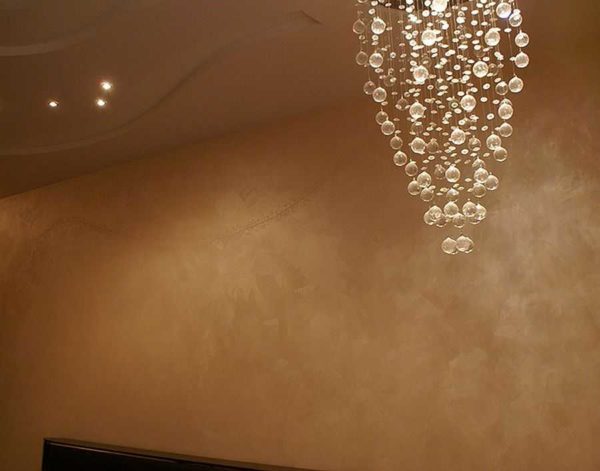
This is what the interior silk paint looks like on the wall.
Paint consumption is average, you will have to paint in at least two layers. This is with low absorbency or a preliminary primer. For an absorbent surface, exactly three layers are required. And the paint is not cheap, so it's better to prime. If the paint is based on acrylic dispersion, then we take acrylic primer. But better than the same company as the paint. There will be no product compatibility issues.
Among the disadvantages - the surface for painting should be flat. Almost perfectly flat. The second point - if you want to get "exclusive", you need to master the application technique. You can, of course, just roll it out with a roller. It will work out pretty well too. But it could be more interesting.
You can wash it with a detergent (not abrasive), cloth or brush. Such cleaning does not affect the appearance. In the sense that it doesn't get worse. Where often the walls are touched, there may be "glazed" places. If you want to have this in the hallway, consider a varnished option. But this type of paint "breathes", so when varnishing, lose this effect.
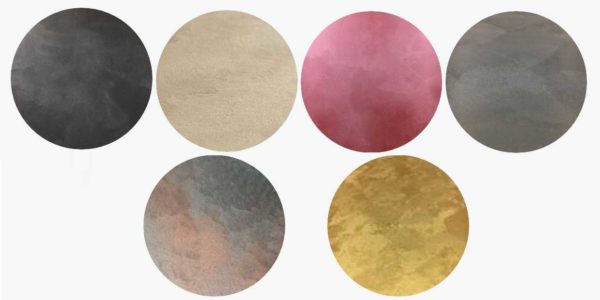
Each company that produces silk-effect decorative paint has a slightly different appearance. Some have several options. And not colors, but textures
If you think that silk effect paint looks the same from all manufacturers, you are wrong. They use different additives, resulting in slightly different surfaces. This type of decorative paint is popular, so some have several colors that give different textures. And then there are different application techniques. With their help, you can get a surface of different types: classic, wet and wrinkled silk.
Advantages and disadvantages
Any finishing material used to cover walls, like decorative paints, has its pros and cons. The benefits include:
- Economical use. Conventional varnishes and decorative plaster have a high consumption compared to decorative paint, which significantly reduces the cost of finishing work.
- Large selection of effects. For those who have a non-standard approach to home decoration, decorative paints are a godsend, because they will help to realize almost any idea.
- The texture paint, due to the particles that make up its composition, will help to create an imitation of velvet, wooden or metal surfaces, and wet silk on the wall.
- In addition to a wide color palette, the line also includes chameleon colors with a pearlescent effect, which will add variety to the interior and, depending on the angle of view, will change their shade.
- The uniqueness and uniqueness of surfaces treated with this paint.
- Strength and durability. Surfaces painted with decorative finishing materials will last for many years, while they will not have any cracks, or peeling, or other mechanical defects.
- Ease not only in application, but also in the dye mixture itself. Thanks to the light weight of decorative paints, it is easy to work with them.
- Unlike wallpaper, dust does not settle on the painted surface.
- Environmental friendliness and safety, which is achieved due to the absence of harmful toxic components in decorative paints.
Among the disadvantages are the following:
- small assortment in comparison with other finishing materials for walls, for example, wallpaper;
- the need for thorough preparation of the surface on which you will apply paint;
- lack of thermal insulation and sound insulation, which, for example, plaster possesses.
Distinctive finishing features
As a building material, decorative textured wall paint is a thick mass (white or colored with pigments) with various fillers that create a relief texture when applied. The paint has the ability to hold the applied pattern until it hardens completely.
The thickness of the permissible paint layer makes it possible to fill in small surface defects, and the texture itself visually hides the unevenness of the plane processed with this composition.
 A combination of decor and decoration items
A combination of decor and decoration items
The preparatory leveling of the plastered walls for the upcoming painting is a rather laborious process. Plasterboard cladding is often used to speed up the deadlines. Such a decision leads to the loss of a certain part of the usable area.
The problem is removed by the applied decorative layer of paint, which only takes on an even more unusual spectacular appearance from the play of the light flux on the embossed pattern.
An example of a stylish interior design that is not demanding on the ideal plane of the base is shown in the photo:
Mastering the technology and methods of work with any textured paint is not very difficult, therefore, in the absence of experience in construction and finishing work, it is worth deciding to independently perform this type of finishing. First, you need to practice on a sheet of plywood, a small and non-critical section of the prepared wall.The mixture has such a solidification period that it leaves enough time for the gradual application of the pattern, its correction, if the master thought that something did not work out.
Characteristic advantages
In relation to other finishing topcoats, the advantages of painting walls with textured paint refer to both the decorative properties and the performance characteristics of the resulting front surface of the walls.
Among the main advantages are the following positions:
- the plasticity of the formed layer, which does not crack under deforming forces from the natural shrinkage of the house;
- dust-repellent properties for easy cleaning when cleaning;
- moisture-resistant film that prevents the absorption of odors, the formation, reproduction of mold and fungi;
- frost resistance;
- resistance to ultraviolet radiation;
- high environmental friendliness, which can be used in bedrooms and children's rooms;
- application on all types of substrates (brickwork, cement and complex mortars, wood materials, glass, metal);
- ease of changing the appearance to another color during the current repair.
 Drawing obtained with polyethylene or wet cloth
Drawing obtained with polyethylene or wet cloth
The photo shows an example of a simple and indefinite texture that will make minor defects of the base invisible or give a natural look:
Materials on a water-dispersion basis are universal, suitable for use in the design of the working area of the kitchen, the respectable interior of the living room, the bright and colorful atmosphere in the rooms for children.
Effect paint
Textured wall paints with effects that liven up the environment and look different when the lighting in the room is changed have become very popular.
In a ready-to-use form, formulations are implemented with the following capabilities:
- Nacre. This paint is able to brighten the room by gently reflecting the incident light. In cloudy weather in autumn and winter, walls resembling a silk cloth seem to radiate warmth. With a change in the angle of view or the type of lighting, pearlescent coatings change color shades. For this, the material is called chameleon paint.
- Velvet (velor). The appearance of a fleecy fabric to the paint is given by the solid grains of various colors included in its composition.
- Granite. The role of granite chips is played by acrylic granules of paints of different shades, which break against the wall during successive application of the material when spraying through a spray gun.
- Textured decorative mixes. They contain mineral particles, shell fragments, fine sand and other characteristic additives. The label indicates which effect is planned by the manufacturer: coral reef, seabed, spectacular shining relief.
 Sand filler with mother-of-pearl
Sand filler with mother-of-pearl
Subtleties of application
Doing it right with your own hands using this material will not be difficult. This work can be done even by beginners in the construction business. The wall, which must be covered with textured paint, does not need an ideal finishing putty, but large irregularities and cracks will have to be eliminated. To do this, you can use cement mortar or epoxy putty. After that, the surface is cleaned of dust and primed with a deep penetrating acrylic primer.
Work best with rubber or rubberized gloves. Despite the fact that most textured paints do not have a harmful effect on the skin, it will not be superfluous to protect your hands. Before painting, it is necessary to protect floors and furniture from contamination, for example, cover them with plastic wrap.
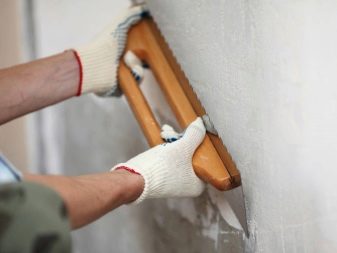

Interior paint is applied to walls in several ways.
A thick-bristled terry roller is the most familiar tool for ordinary paints, it is also convenient for applying textured, not too thick compositions.
A thicker consistency can be applied with a spatula.It is quite possible to create relief concentric patterns or waves with a tool with a width of 10-15 cm. For smoother surfaces, you can use spatulas 30-40 cm. In this case, it is better to make asymmetrical movements.

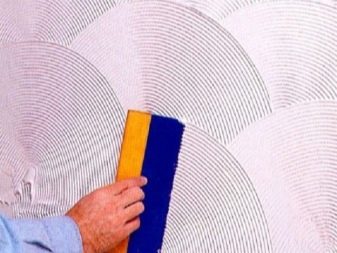
Especially for this type of work, there are rubber comb-spatulas with small teeth. After passing them over a layer of paint, bizarre patterns are obtained. For the beauty of finishing, movements should be made long and uneven.
Many types of textured paint are applied by hand. The advantages of this method are that you do not need any tools, and with the help of your hands and fingers you can create any pattern, it all depends on your own imagination.
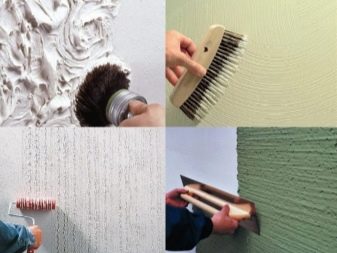
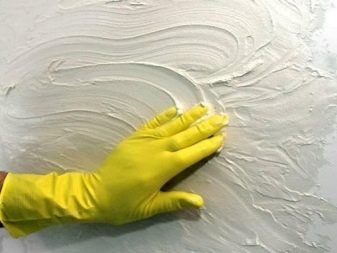
To create fancy textures with textured paint, you can use any improvised objects, the imagination is limitless here. Some make patterns with a broom or brush. It is also possible to create a stencil and colors using it.
A very unusual version of textured paint in the form of a spray in cans. Due to the special composition of the substance, the jet directed to the wall forms a volumetric pattern. There are many texture options: stone, wood, granite chips, marble. Such a product costs a lot, but its consumption is small, it is easy to work, and the effect is amazing. Among the manufacturers of textured paints in spray cans we can mention: Rust Oleum, ABRO, American Accents.
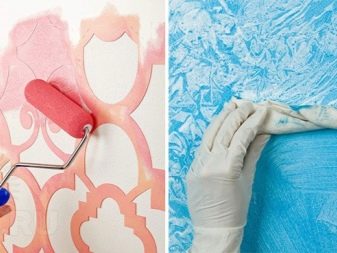
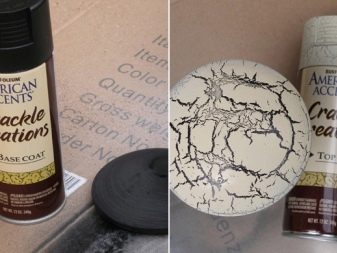
Options for possible textures
The choice of textures for structural paint is limited, it has several main names, these are:
- "Mizuri";
- "relief";
- "Marseilles wax";
- "Wet silk";
- Atacama.

They all have different properties, give a very different visual effect, and differ in application.
Relief
"Relief", which contains large solid particles, creates the texture of waves, "bark beetle", cracking, all kinds of smudges, etc. Available in several tones, applied with a roller, spatula.

Misuri
"Misuri" - is performed using acrylic filler, modified starch. Textured or flat planes, smooth wavy elements are made from it. There are many colors, the finished wall comes out with a characteristic gloss, it is applied exclusively by hand.

Marseilles wax
"Marseilles wax" is a dye mixture with a wax filler. When the surface is ready, it resembles an aged but shiny stone, with characteristic light, dark fragments. The coating perfectly protects against fumes, excessive moisture, and is suitable for the decoration of elite, luxurious premises.

Wet silk
The composition of "wet silk" - cotton, cellulose fibers, polymer dyes. The finished wall has an average degree of “volumetric”, but the patterns on it shimmer beautifully, resembling silk, velvet, velor, etc. Different brands are made in different colors.

Atacama
"Atacama" comes out the roughest, as it contains quartz sand. The plane, decorated with this material, shines like metal, an old mirror, a sheet of steel, shimmers under the influence of lighting.

How to choose the right acrylic paint for walls and ceilings
There are special acrylic paints for the ceiling on sale. Which one to choose? The decision is made on the basis of a comparison of several characteristics, properties of a particular room. Ceiling paint is most often suitable for walls as well. You can often find coloring compositions labeled "for walls and ceilings".
The main question when buying acrylic ceiling paint is which one is better? It is impossible to answer objectively. For each case, certain characteristics are required:
- Colour
- Gloss degree
- For what type of work (external or internal)
- For which surfaces the composition is suitable - not all are suitable for wood or drywall
- Main parameters - consumption, covering power, drying time
- Additional properties depending on the requirements in a particular case
The first parameter for choosing acrylic paint for walls and ceilings is color. There are two selection options:
- Mixing white paint with color scheme. When choosing this option, you must save the tinting code;
- Purchase of finished colored paint. It is recommended to buy it with a margin, since it is almost impossible to get an exact match in shade in different batches.
The next parameter is the degree of gloss. On this basis, there are three main types:
- Semi-gloss, glossy, high-gloss - only for a perfectly flat surface, as it emphasizes all defects, and the higher the degree of gloss, the higher the surface requirements
- Deep matte, semi-matte, matte - not demanding on surface quality, durable
- Pearlescent - gives volume
- Chameleon is a kind of mother-of-pearl that has an overflowing effect.
General characteristics of acrylic paints to look out for:
- Opacity - expressed in the number of grams of the coloring composition required for dense painting of 1 sq. m of surface. Applying 20-60 g of paint with good hiding power makes the previous color completely invisible
- Drying time - ranges from 1 to 4 hours
- Consumption - expressed in sq. m, which are covered with one liter of paint. For acrylics, this figure ranges from 9 to 13 square meters. m.
According to additional parameters, acrylic paints are:
- Moisture resistant - for bathrooms, toilets, showers, swimming pools, kitchens, and other wet rooms
- Biostatic - especially recommended for use in kitchens and bathrooms. Contain components (silver, etc.) that stop the development of fungi, mold, bacteria
- Heat-resistant (for heating radiators) - for finishing places that are constantly exposed to heat (walls next to a gas stove, etc.)
- Frost-resistant - for interior decoration of unheated rooms
- For painting stains and streaks - Recommended for covering surfaces stained with nicotine, oil, soot, etc.
- Textured - create an embossed pattern
- Extra strong
For rooms where frequent wet cleaning of the ceiling and walls is required, washable acrylic coloring compositions are suitable.
When choosing them, you need to pay attention to the resistance to wet abrasion. It indicates the degree and frequency of exposure to the coating:
- Grade 1 - repeated intensive washing using non-abrasive household detergents
- Grade 2 - mild washing with a sponge using non-abrasive household detergents
- Grade 3 - gentle washing with a sponge without using other means
- Grade 4 - periodic wet cleaning
- Grade 5 - dry cleaning only
The best acrylic ceiling paint is latex. It is distinguished by the strength of the coating, resistance to ultraviolet radiation, it is easily washed off from hands and tools (if you do not allow it to dry), it fits well on any surfaces except glossy and metal ones. It can be subsequently applied to any other type of coating. The only drawback is that latex is a favorable environment for the development of fungi and bacteria. This problem is solved by applying a primer with antiseptic components before painting.
What is the difference?
By its consistency, textured paint is much thicker than the usual types used for exterior and interior decoration: enamel, oil, acrylic. Therefore, when working with it, you will have to use several other tools and methods of application. The structural component is also different: if for traditional types of paints the main task is to make the wall even, then with the help of textured, on the contrary, they achieve a relief surface.
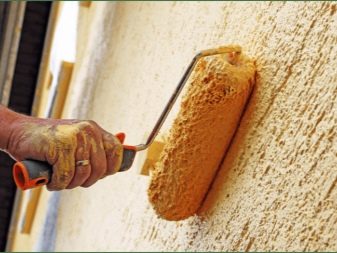
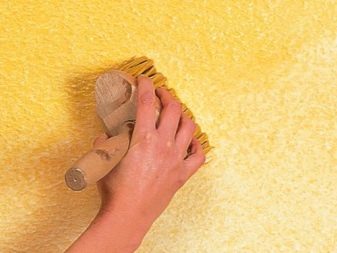
The composition of textured paints, unlike other types, may include fine-grained insoluble elements, which, when applied, give waves, roughness or other volumetric effect. The components of these grades are extremely diverse - from natural sand to complex polymers.
Unlike other types of coloring materials, textured paint does not require leveling the surface with a base and finishing putty before application. Ideally flat, “zeroed” walls are not needed, and this also simplifies the work.
